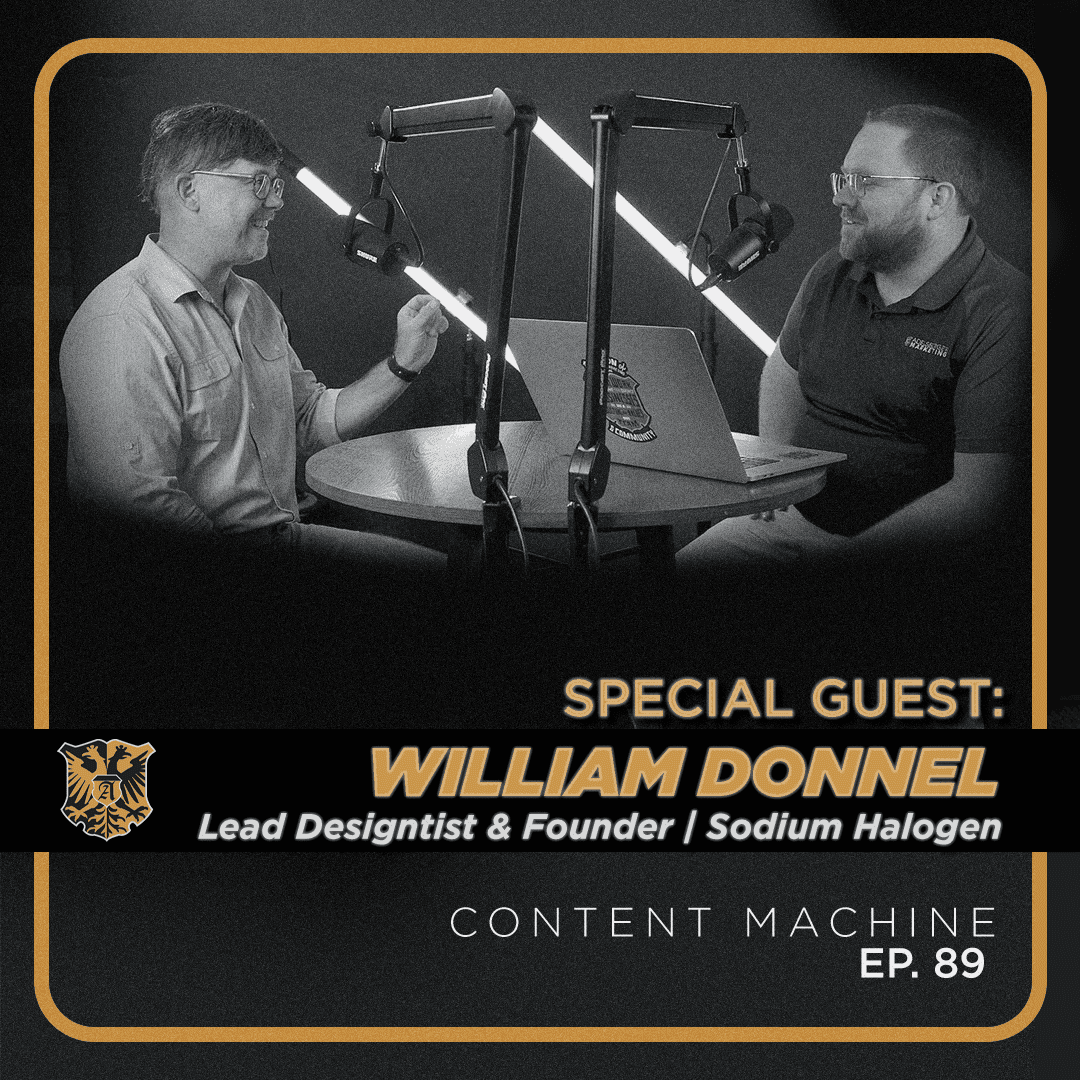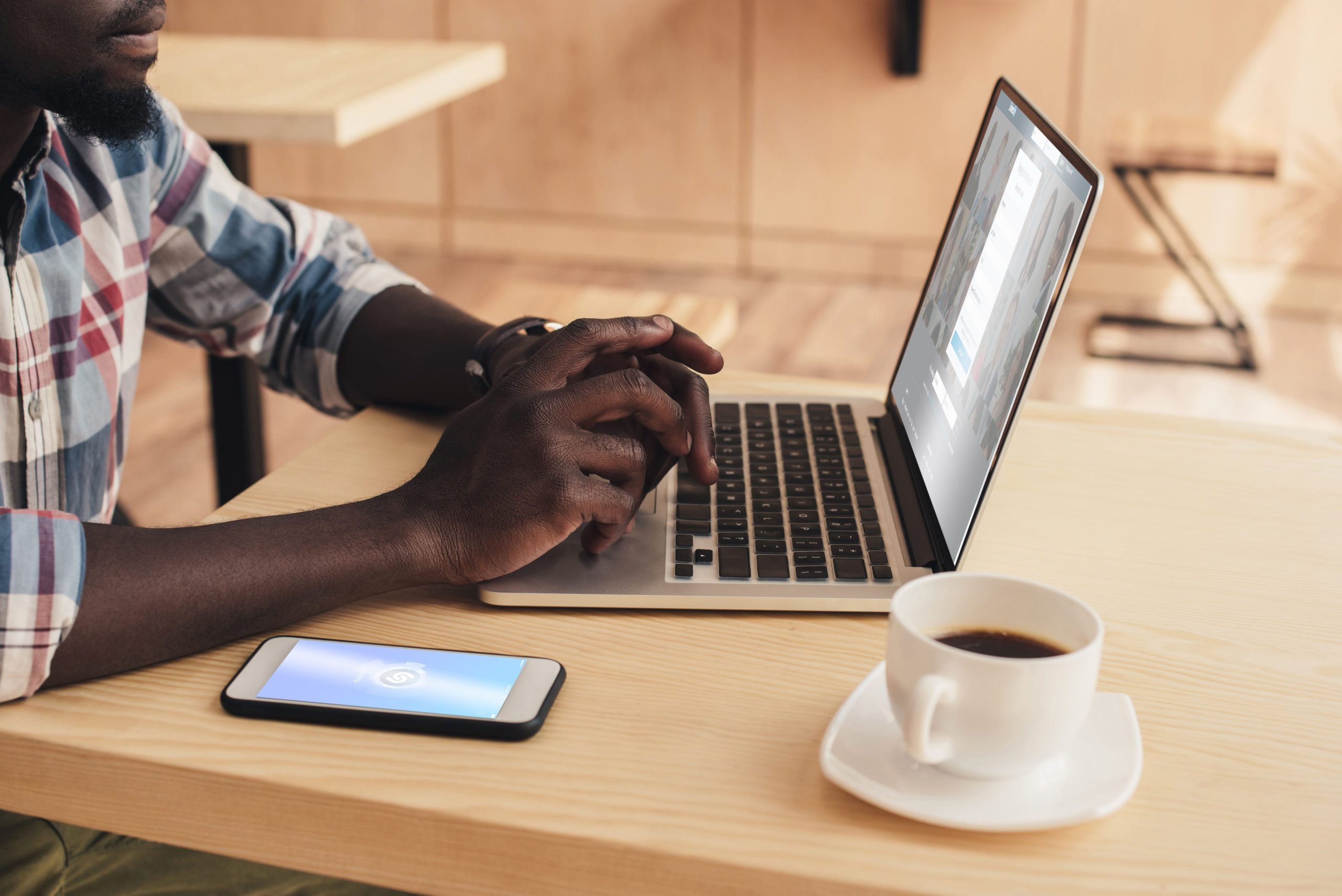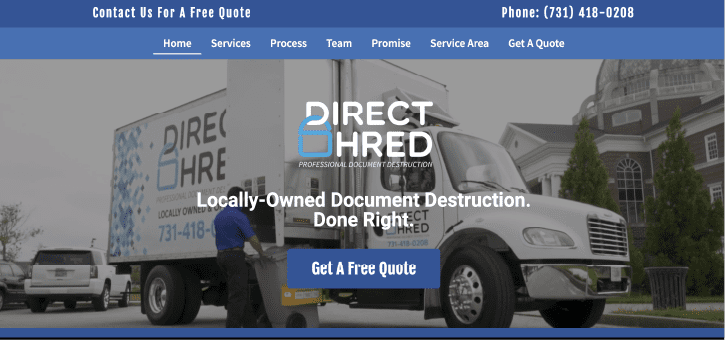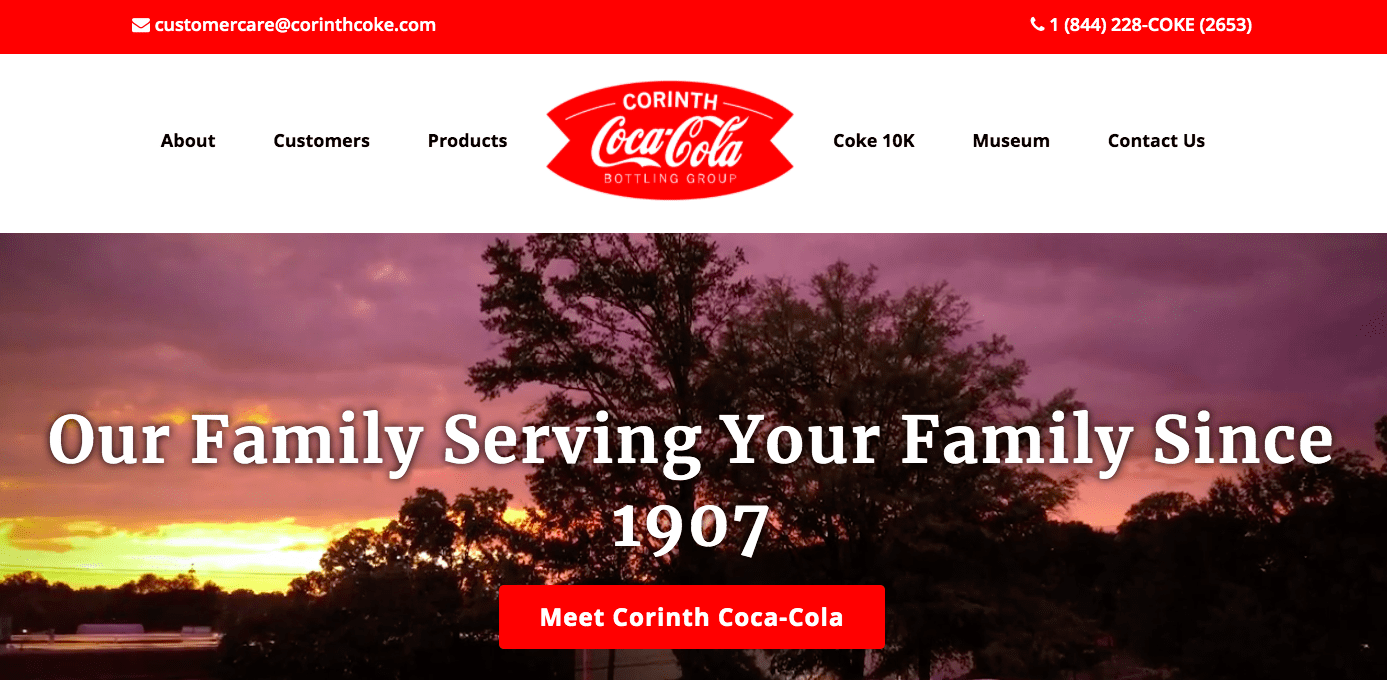Kevin
Thanks for joining us for the Content Machine podcast. Today, we are having the second half of our episode with William Donnell, who shares his journey in business. You’ve found this, started to explore and grow into this niche of UI and UX research, but you went further than that. It wasn’t just you didn’t get to there and you’re like, Okay, this is what we do now. You kept developing and narrowing that. Talk about the thought process of deciding… Well, let’s jump here first. Okay. What did you end up narrowing into? And then can you talk about why you decided to continue to pursue that narrowing?
William
Our target audience and what we do has gotten super, super specific. Now, we work with early-stage cybersecurity companies. We do research on their product for them. We watch how their customers and potential customers use their product. We design the interface and then test it to make sure that it’s easy to use, that it’s powerful, that it has the features that their customers actually want and are willing to pay for. The way we got there, though, goes back to Marcy again. Because one foot of that startup was in San Francisco, all things start up there in San Francisco, right? But the other foot, because of the policy of it, was in DC. The venture capitalists were from DC, and another huge hub for DC is cybersecurity. And so cybersecurity was a fairly new field, I would say. This was 12 years ago, 13, something like that years ago, I guess. And so because of a venture capitalist, we got introduced to a cybersecurity company. We knew nothing about security, knew nothing about any of that. We started working with this company. Our niche at that point was working with startups, product design for startups. That’s a niche, right?
Kevin
Absolutely. For the listener, you really define niche in two ways. It’s usually vertical, which is industry-based, or horizontal, which is… I’m sorry, did I mess that up
William
No, you got it right.
Kevin
Horizontal, which is service-based. You had already found your horizontal niche of doing user experience, but now you’ve started to move into a vertical niche as well
William
Yeah, that’s right
Kevin
But because you had that series of connections that continue to push you further down that rabbit hole.
William
Right. So I found that a really cool thing happens when you do good work is that people will refer you to other people. And so the people in… If you’re in cybersecurity, or if you’re someone who funds cybersecurity companies, then there’s a good chance that you’re probably going to have other portfolio companies that you think could use our services, or You’re someone who is at a cybersecurity company, and you’ve got a buddy that’s starting this one over here, or they say, Hey, who did y’all’s app? And so then they’ll refer them to someone else. So it’s funny. The startup world and also cybersecurity are not niches that we went out and went looking for. They were both niches that found us. Honestly, I’ve never thought about this before, but if you roll it back, even website design was never a field that I went looking for. It was a field that ended up finding me.
Kevin
Yeah, that’s awesome.
William
Yeah. And again, back to the short answer, providence of God
Kevin
Yeah, absolutely. Now, as you’ve developed this niche and have gotten real deep in it, you’ve As far as I’m aware, you’ve started turning other stuff down and you’re really going after this one thing. How has that changed the business?
William
Yeah, it’s been wild, honestly, and scary. I read a bunch of articles and listened to a lot of people that are way smarter than me on this topic of nicheing down. One of the things you hear consistently is that if you niche down, then you’ve got a much better chance. It’s going to be easier to sell to that target audience. It can be more profitable. You can charge more for your expertise in a specific niche. Then if you have a large enough market, then you can be profitable at that. But it’s also scary. It’s tough to have someone approach you for a thing. You’re like, Hey, we could do that. But if we say yes to this thing that’s not what we’re trying to accomplish, then essentially we’re saying no to something else that might come along in a week, in a month, that is exactly what we want to do and will help us accomplish our long term goals that we have. It’s really scary doing that.
Kevin
You’re not only just having to turn business away, I mean, I guess that would affect all the aspects of the business. How has the team changed? Because I feel like you probably had a certain set of skill sets that you needed prior to the transition towards this. Is that skillset and those people different than it was 10 years ago
William
Yes and no. I think that us narrowing down to product design, I mean, the main person that’s done the design side of things has been Shane, who when we first started working together, he was designing ads and print pieces. And the same thing for me. I’m the other person that has been here that whole time, and I’ve got an Ag degree. I think some of it is really just figuring out, Oh, here’s this new thing. Here’s this new market you know nothing about. If you’re going to go after it, then you just try to become a sponge and learn as much as you can about that industry. Or you were talking before about the vertical and the horizontal. You learn as much as you can about this vertical of cybersecurity, and then you learn as much as you can about this horizontal of product design. The principles of designing a product for a fintech startup, a financial banking app, let’s say, those principles still apply to cybersecurity. Now, there’s some inside knowledge that you need to have about security to be able to do that well. But a lot of those principles, design principles, user experience principles, those apply to whatever field you’re in. I think it’s really been more of a case of our team needing to adapt and just adapting to the new market, whether it is a new product type or it’s a new industry that’s there. Now, we have had some changes in our team. We have shifted our focus away from doing design and development of apps. We still do a little bit of that, but we’ve definitely dialed that down some and shifted more onto the design and research side of things. We have definitely… There’s been some changes in the team, but I feel like it’s been more of an issue of the team adapting rather than us having to adapt the team, if that makes sense.
Kevin
Yeah. You’ve niched down considerably. Do you niche down any further? Is there another step or are you at the place? What do you think the next phase looks like?
William
I’ve never really known what is out there. I think this is the niche that we’re going to stay in, but I don’t really know.
Kevin
Now, you’re solely focused on these customers, which you said earlier that there’s 300 companies.
William
Yeah, that’s the thing that’s crazy. I guess that’s another thing to mention about niching down is that I’d mentioned before, you have to have a large enough target audience. If you niche down to only people who are named Kevin that wear black shirts that are in this room, that might not be enough to feed your family.
Kevin
Unless I got a lot of money, which I don’t. But maybe cut that out. I’m just kidding.
William
Who are you talking to? Oh, hey. That was my Ryan Reynolds moment. Oh, yeah. Yeah, not very effective. But you still have to have a large enough audience that’s there. It’s a little tricky figuring that out. I did say before we got started recording that there’s maybe 200 or 300 companies in the world that are our target audience. That seems crazy. Now, there’s new ones that are coming on, and there’s ones that are getting too big for us. There’s fresh people. It’s not a stagnant pond, but it’s like there’s this body of water, and there’s water that’s flowing out here of customers that are no longer our target audience and new ones that are coming in.
Kevin
Well, and then theoretically, with an audience that small and that specific, it should be pretty easy to target them, right?
William
Well, yes, that’s the idea. You’re talking about having the changes in our team. One of the biggest changes has been in my shift and my responsibilities and what I’ve had to do. Because in the past, it really has just been where we’ve gotten referrals that have come in. And with us nicheing down this small, I’ve had to take a much more active role in sales.
Kevin
Yeah, because not anybody can just refer things to you now, right? Right.
William
Yeah, exactly.
Kevin
Because if to stay in that niche, and how many people in that niche are going to refer to someone else? Is competitive in that way within that niche
William
The cool thing is, and I’m learning more about this, but it’s a big group of people that are in cybersecurity, but it’s not a big group of people that are in cybersecurity. There’s a lot of people know one another. There’s a company called Silance that’s now huge. A lot of people that were at Silance, one of those folks started a new startup called Hidden Layer. Because he knew several people that used to be at Silance, and maybe those people had gone and worked at other organizations. He was like, Hey, remember when we did some awesome stuff at Silance? I want you and you and you come and do this new thing with me. If you know those folks, then as they go and work at new organizations, then they’re like, Oh, I remember we worked with Sodium Halogen. They were great. Yeah, there’s a good bit of that.
Kevin
If you were to start over again, would you niche soon?
William
How far back.
Kevin
That’s fair. Going back 15 years ago, 20 years ago, would you have niched sooner, or do you think it happened so naturally that that’s the way to do it?
William
Do I have the knowledge I have now? Or do I just have that piece of insight?
Kevin
I don’t know.
William
I don’t know. Yeah, that’s the thing about hypotheticals. Gosh, I don’t know.
Kevin
Is your life easier now that you’re niche, or was it easier then when you were taking out profitability, but maybe the day-to-day work, the sales, the day-to-day
William
Yeah, it’s a great question. Is it easier? I don’t know that it is. I think in some ways it’s easier, in some ways it’s not right. So it’s just trading off pros and cons, probably. But I enjoy what I’m doing. I will say this, once we started doing product design, I’ve always enjoyed my job. When we were doing music full-time, I love that. I’ve never really had a job that I didn’t enjoy. I’ve never had a real job, so there’s that. But as soon as we found product design, it’s like, Oh, man, this is the thing. I really, really love this. I get to create a thing that people use. I get to watch them use it. I get to ask them questions about what’s great, what’s not great, how can we make it better, and then make changes to that product, and then ship that out to those people, and find out if it’s actually making I say making their lives better, but even if it’s like, Hey, I’ve got vulnerability threats. I’m going to use some jargon here. I’ve got vulnerability threats that are coming into my organization, and I need to know what pieces of software on all of the computers on my network. That’s one of our clients that we worked with. For that person, the product that we helped design is absolutely making their life easier, because before they had just a wild guess of finger in the wind, this is how many of devices on my network are secure like they’re supposed to. We’ve got a view. Literally, you can see it’s like a Venn diagram. You can see exactly how many people are in each of those quadrants that have that. That’s really cool. I enjoy that.
Kevin
Well, William, if people want to learn more about you and Sodium Halogen, what should they do to do that?
William
Then go to the website, and they’ll find some information and see some examples of work that we’ve done there. Then we talked about shifts responsibility. So I’ve become way more active in the biggest social media network, the only one I’m on, LinkedIn, which is maybe the lamest one. But for business, that’s where it takes place.
Kevin
Well, I mean, and you’re doing stuff like this because I’m sure hundreds of cyber security professionals watch this show. Yes.
William
They talk about Kev all the time. Yeah.
Kevin
Good call back to something that happened before the show. So, William, thank you so much for making the time to come and join us. Thank you for your friendship. I look forward to seeing where Sodium Halogen goes from here.
William
Awesome. Thanks, Kevin.
Kevin
Thank you for joining us for the Content Machine podcast. Be sure to check out William on LinkedIn, where he’s sharing lots of interesting content about cyber security and user experience. Stay tuned for future episodes of the Content Machine podcast, where we talk about leadership, marketing, and culture building in the small business environment.










